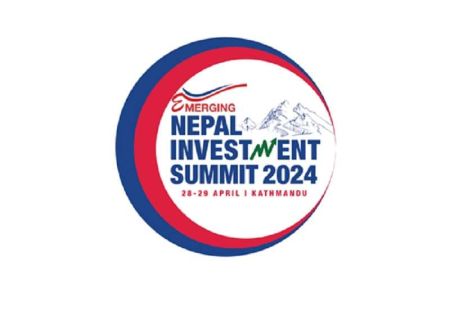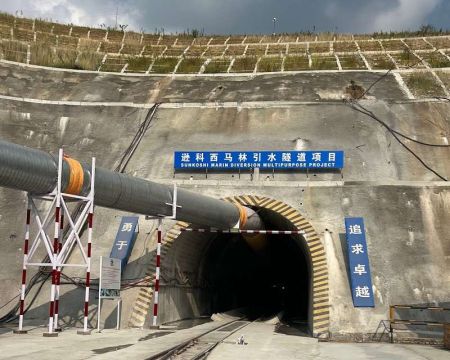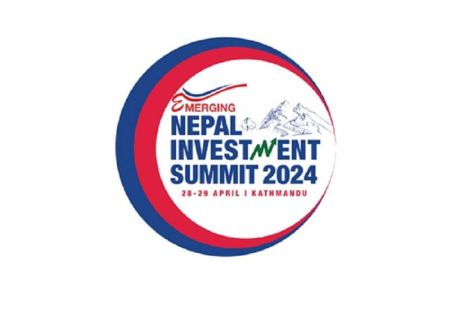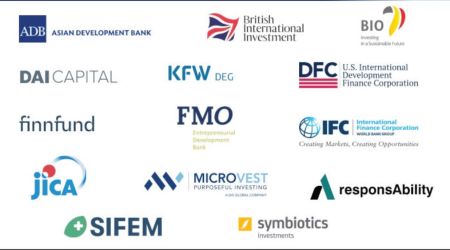 By Achyut Wagle
By Achyut Wagle
Nepal, at least, constitutionally is a federal state now. But the fiscal component in the federalism, which should have been the main basis for federalising the country, is way below in the state restructuring agenda. The preamble of the Interim Constitution of Nepal 2007 has baptized the country as the Federal Democratic Republic Nepal. The Article 138 of the same Constitution has provided basis for restructuring the state.
Â
Both, the constitutional and circumstantial yokes now guide Nepal, for better or worse, to perhaps irreversible journey to federalism. But, matter of factly, that is all in theory. Practically, there is a wide political space to be covered between the present unitary state to a judiciously delineated, stable yet functionally acceptable-to-all federal structure of future Nepal. Yet again, the federal Nepal is impossible to imagine without bringing the fiscal frame of federalism into forefront of the state restructuring discourse, which now seems to have obliqued by hyperboles on either side of the political debate.
Â
Despite an euphoria of a sort to resolutely adopt a federal system, the objectives envisaged by the Interim Constitution in this particular regard appear rather slanted. The very concept incorporated in the Article 138 does not accept federalism by-and-large as an economic phenomenon. It proposed to ‘end the disparities’ of various forms, but hardly prescribes modality for prosperity and optimal use and scientific redistribution of resources. The worst proposition in the constitution is: it has authorised the government, not the Constituent Assembly (CA) to constitute the State Restructuring Commission, which is supposed to give impartial technical inputs.
Â
It is apparent that the federal structure of the nation cannot be finalised without technical report from the Commission, and thus, organising constitution writing process would not

complete without the Commission and its inputs. Apart from this, the constitutional provision regarding the Commission gives more ominous than the virtuous signal. The authority given to the government to form this Commission provides an edge to the party in power to make it comfortable to itself and therefore, chances of its report being politically biased remain higher. Why was not the responsibility of constituting such a commission vested to the all powerful CA is a question unanswered so far.
Â
Nevertheless, Nepal has no alternative to writing a new constitution, sooner or later. That new constitutional framework must embrace the federal set of polity and structures. Of all the structures, fiscal federalism will be both – defining and delineating basis of the sub-national administrative units, and also the means to ensuring justifiable (re)distribution of resources, prosperity and welfare. For all these reasons, the fiscal federalism is and should be at the centre, in all discourses related to the federal restructuring of Nepal.
Â
Essence of Federalism
Federalism is unique and in a way paradoxical concept. First, it seeks to consolidate the national unity while creating newer and larger number of sub-national units; ostensibly by divisions. Second, its objective is to recognise the social, linguistic and/or cultural identity without diluting the overall national identity. And, the third, it strives to bring the government nearer to the people that has a better sense of autonomy in deciding their own fate, but without severing its ties and dependence to the farther government – the one at the centre.
Â
For many, federalism is merely an administrative re-mapping of the political geography of the nation. Creation of sub-national structures, that may be called state, province, prefecture or anything of the kind, seems to the prime objective of Nepal’s ongoing debate on federalism. But, how these new structures evolve and exercise the state power – mainly to meet the economic needs of the citizenry – would determine whether any nation is essentially federal or not. Nepal cannot be exception to this fundamental theoretical premise.
Â
The functions, duties and rights of the federal unit are defined by the extent of power a unit can exercise. Its authority depends on the adoption of universally accepted models to extract power from among the – delegation, decentralisation or devolution, or combination of all of these. And, at the heart of all of these lies – the democracy.
Â
There are very large nation-states world over with varying number of sub-regional administrative units. But, in absence of democratic dispensation, right from the grassroots, these units can only exercise very limited state authority delegated or marginally decentralised by the centre. Only power devolved by democratic exercise can only create a federal state, true to its sense.
Â
Fiscal Federalism at the Centre
The concept of fiscal federalism, and for all practical purposes, the entire frame of federalism, is generally summed-up in three major
components – namely the tax-point transfers, equalisation grants and convincingly justifiable distribution of resources mainly the natural resources among the sub-national units. There are other peripheral, operational or fringe issues too. But in effect, the main three would largely incorporate them all. There are also several models of both ‘fiscal’ and ‘general’ federalism. But, they too do not necessarily go beyond these three fundamentals of federalism.
Â
Also, there are views against the perspective of limiting the ‘entire federalism’ to the ‘fiscal alone’ proposition. It is

more apparent in Nepal’s discourse on federalism. Even the top-hats of major political parties who would be deciding the ultimate frame of Federal Nepal also tend to believe that without specific mention of issues like political inclusion, rights-based access to state and recognition of racial and ethical identities, the very purpose of federalism, at least for them, could be defeated. The level of understanding of our CA members on such technical and essentially academic issues is better not to raise here.
Â
In fact, unlike the popular beliefs, the issues of inclusion and identity are rather purely economic issues. For example, the inclusion is not sought in any abstract issues, it is rather meant to ensure inclusion in employment, benefits and other economic opportunities. Even the preservation of identity either is an economic activity in itself, or it has a cost to develop and preserve the different facets that give an identity to people and communities – like language, scriptures, rituals, customs, traditions and culture.
Â
These realities make it imperative that Nepal’s discourse on federalism needs an immediate and meaningful re-orientation, so as keeping the fiscal federalism at the centre of all exercises aimed at state restructuring. And, highly extensive technical and factual details and their analyses would require deciding on the size and the borders of new sub-national states. Nepal does not seem to have even initiated the process of those financial and other statistical number crunching, so far. Therefore, the claims that constitution could be written within a month ‘if’ the parties agrees are unrealistic platitudes. Expert believe that it would take at least six months of rigorous effort for a highly competent professional team to finalise the issues related to fiscal federalism – i.e. tax, distribution of natural resources and, of course, demography and geography.
Â
In the hindsight, this is also an indication that it is impossible to complete the constitution writing by the stipulated deadline of 27 March 2011. Also, political campaigning to create new states on the basis of caste, community or even some extreme demands like ‘One Terai, One Province’ do not present potentiality for financially viable provinces.
Â
Technical Considerations
Financially justifiable and economically functional sub-national delineation is going to be perhaps the most challenging aspect to give Nepal a federal shape. All three major aspects – tax point transfers, equalisation grant and distribution of natural resources among the provinces – involve larger number of murkier issues than the easier ones.
Â
Apart from these, several other components of fiscal relations between the central and sub-national governments, financial management and its processes within the state must also be decided to effectively devolve power to the people at the grassroots. Such issues may relate, but not limited to planning, economic diplomacy, money market and specialised institutions for both fiscal and financial architecture. Given Nepal’s poor governance and slanted nature of understanding about fiscal federalism even at the top-rung of political leadership, the country seems to be making ommitive than spontaneous jump to fiscal federal structure. These are some of the reasons why these issues deserve more

meaningful discussion, before the country could decide on the actual frame of federalism, essentially the fiscal federalism.
Â
Tax Point Transfers
One of the key components of federalism is the decision on the jurisdiction of major tax collection points, i.e. which sub-national government will administer or operate a particular tax point, the types of taxes a province would collect and how the collected revenue would be distributed between the centre and the state, and, sometimes among the states.
Â
In case of Nepal, the decision on the jurisdiction of tax points could face double pronged problem. First, only six customs points collect over 90 per cent of the customs revenue (Table 1). And, the amount of collection at only the points that lie in two zones – Bagmati and Narayani of the Central Region, account for well above sixty per cent. The customs revenue generally accounts for 25.3 per cent of the total revenue.
Â
Similarly, the revenue contribution of four districts is above 80 per cent and this reaches to 94 per cent if added another four districts.
Â
This situation does not only present high tax concentration in the Kathmandu Valley and the central region but also poses a serious challenge to divide the provinces so as each of them can have reasonably attractive tax collection points within their territory. It also indicates to the reality that despite adoption of federal structure, the financial dependence of the provinces could yet remain with Kathmandu. And, even worse, this economic factor cannot be drastically altered soon by a mere political decision.
Â
In addition to deciding on the tax point jurisdiction, decision on the kind of taxes that provinces can impose and the taxes that would directly go to central accounts is also going to be a difficult one. Generally, property and service taxes are levied by the local bodies, sales and value added taxes go to the provincial government and customs and income taxes go to the central government accounts. This assumption appears suitable in the case of Nepal too, as our vertical administration is accordingly stratified in three tiers.
Â
Equalisation Grants
Despite tall asks of autonomous and semi-autonomous provinces on different bases, the fiscal and financial fundamentals do not support the possibility of creating such states. The basis of autonomy is the abundance of physical and financial resources available within any given political unit. As evident in the tax collection patterns, the revenue resource does not support such an ‘autonomous state’ except the one created at the centre, incorporating Kathmandu.
Â
Until the state-to-be-created in the federal set-up are capable of mobilising their own resources, the equalisation grant, the money given by the centre, will be the most dependable source to finance the development and public delivery of goods in the provinces. Even on this count, our debate on federalism seems unduly titled to political considerations alone. In the most ideal cases of revenue and grant sources of funds, dependence to centre remains pretty high. For example, the provinces of Switzerland are entitled to keep 50 per cent of the revenue collected and Canadian ones can hold up 47 per cent of it. These are the highest rates of centre-province revenue sharing the world over. In this light, the ‘autonomous’ state advocated in Nepal appears pure farce.
Â
But, in our case, the ‘sustainability’ or ‘survival’ side of the new states has never been debated thoroughly as the issue deserved. There are also demands of creating separate provinces like ‘Karnali’. One could easily imagine the level of would-be financial dependence of such states to the centre. Such scenario implicitly infer that centre must once again remain strong as it will have to continuously dole out money to so called autonomous provinces, and, it in turn, has to be strong in effect to gather enough amount of resources to be able to meet the needs of all these new ‘baby’ states.
Â
Natural Resources
The distribution of natural resources among the new provinces is another difficult and unavoidable task on effecting federalism. There are several examples of serious disputes between the provinces regarding the rights to use such resources. The Kaveri and Narmada river disputes in India are classic examples to it.
Â
In Nepal, water, forest, mines and minerals and land (mainly cultivable) are considered major natural resources.
Â
For us, one advantage of this resource vis-a-vis federal imperatives is that, it is fairly evenly distributed given that we agree to justifiably allocate them to generally acceptable size and number of states; say five to nine.
Â
Recently, some campaigns misinterpreting the international instruments like ILO Article 169 have compounded the problem. But, lately the people involved in the indigenous rights movements themselves are becoming somehow disillusioned to deliberate misleading campaigns of yesteryears. However, natural resources will still remain a major basis of re-delineation and the process will surely be difficult.
Â
Other Issues
There are several other issues which have to come to the forefront in the discourse on federalism. They include, whether a province should have authority to carry its own economic diplomacy to accept or endow financial assistance from and to international community; whether it can have its own finance bill; or would it have own supervisory and regulatory authorities independent of central oversight or would they just function as extended line agencies, etc. Equally complex is the issue of large infrastructure projects, their management, ownership and return – if any.
Â
Unfortunately, Nepal as the country as a whole, and CA in particular as the only responsible constitutional organ to debate all these provisions to include in the new constitution, have remained far short of initiating meaningful deliberations. Whatsoever, Nepal in executing the federal structure must ensure unfringeable private property rights universally in all the states, freedom to movement of products and services as well as people, unhindered trade and business transactions between the states and uniform (underently different) tax structure, among others. n
Â
Article 138 of the Interim Constitution
138. Progressive restructuring of the State:
(1) There shall be made progressive restructuring of the State with inclusive, democratic federal system of governance, by doing away with the centralized and unitary structure of the State so as to end discriminations based on class, caste, language, gender, culture, religion and region.
Â
(1a) Recognizing the desire of the indigenous peoples and of the people of backward and other area including Madhesi people towards autonomous provinces Nepal shall be a federal democratic republican state. Provinces shall be autonomous and vested with full authority. The boundaries, number, names and structures, as well as full details of the lists, of autonomous provinces and the center and allocation of means, resources and powers shall be determined by the Constituent Assembly, while maintaining the sovereignty, unity and integrity of Nepal.
Â
(2) There shall be constituted a high level commission to make suggestions on the restructuring of the State as referred to in Clauses (1) and (1a) The composition, function, duty, power and condition of service of such commission shall be as determined by the Government of Nepal.
Â
(3) The final settlement on the matters relating to the restructuring of the State and the form of federal system of governance shall be as determined by the Constituent Assembly.
 By Achyut Wagle
By Achyut Wagle complete without the Commission and its inputs. Apart from this, the constitutional provision regarding the Commission gives more ominous than the virtuous signal. The authority given to the government to form this Commission provides an edge to the party in power to make it comfortable to itself and therefore, chances of its report being politically biased remain higher. Why was not the responsibility of constituting such a commission vested to the all powerful CA is a question unanswered so far.
complete without the Commission and its inputs. Apart from this, the constitutional provision regarding the Commission gives more ominous than the virtuous signal. The authority given to the government to form this Commission provides an edge to the party in power to make it comfortable to itself and therefore, chances of its report being politically biased remain higher. Why was not the responsibility of constituting such a commission vested to the all powerful CA is a question unanswered so far. more apparent in Nepal’s discourse on federalism. Even the top-hats of major political parties who would be deciding the ultimate frame of Federal Nepal also tend to believe that without specific mention of issues like political inclusion, rights-based access to state and recognition of racial and ethical identities, the very purpose of federalism, at least for them, could be defeated. The level of understanding of our CA members on such technical and essentially academic issues is better not to raise here.
more apparent in Nepal’s discourse on federalism. Even the top-hats of major political parties who would be deciding the ultimate frame of Federal Nepal also tend to believe that without specific mention of issues like political inclusion, rights-based access to state and recognition of racial and ethical identities, the very purpose of federalism, at least for them, could be defeated. The level of understanding of our CA members on such technical and essentially academic issues is better not to raise here. meaningful discussion, before the country could decide on the actual frame of federalism, essentially the fiscal federalism.
meaningful discussion, before the country could decide on the actual frame of federalism, essentially the fiscal federalism.





















